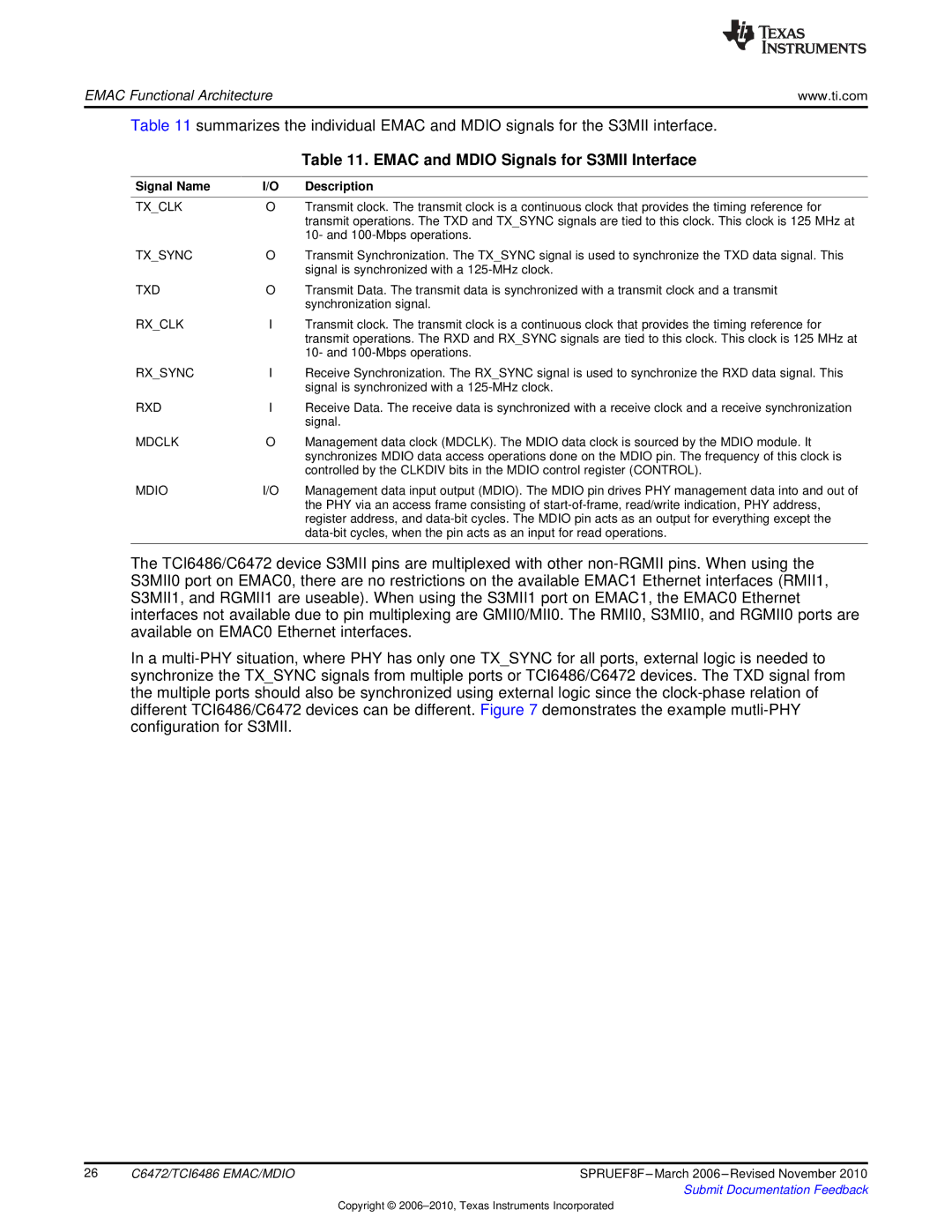
EMAC Functional Architecture | www.ti.com |
Table 11 summarizes the individual EMAC and MDIO signals for the S3MII interface.
|
| Table 11. EMAC and MDIO Signals for S3MII Interface |
|
|
|
Signal Name | I/O | Description |
|
|
|
TX_CLK | O | Transmit clock. The transmit clock is a continuous clock that provides the timing reference for |
|
| transmit operations. The TXD and TX_SYNC signals are tied to this clock. This clock is 125 MHz at |
|
| 10- and |
TX_SYNC | O | Transmit Synchronization. The TX_SYNC signal is used to synchronize the TXD data signal. This |
|
| signal is synchronized with a |
TXD | O | Transmit Data. The transmit data is synchronized with a transmit clock and a transmit |
|
| synchronization signal. |
RX_CLK | I | Transmit clock. The transmit clock is a continuous clock that provides the timing reference for |
|
| transmit operations. The RXD and RX_SYNC signals are tied to this clock. This clock is 125 MHz at |
|
| 10- and |
RX_SYNC | I | Receive Synchronization. The RX_SYNC signal is used to synchronize the RXD data signal. This |
|
| signal is synchronized with a |
RXD | I | Receive Data. The receive data is synchronized with a receive clock and a receive synchronization |
|
| signal. |
MDCLK | O | Management data clock (MDCLK). The MDIO data clock is sourced by the MDIO module. It |
|
| synchronizes MDIO data access operations done on the MDIO pin. The frequency of this clock is |
|
| controlled by the CLKDIV bits in the MDIO control register (CONTROL). |
MDIO | I/O | Management data input output (MDIO). The MDIO pin drives PHY management data into and out of |
|
| the PHY via an access frame consisting of |
|
| register address, and |
|
| |
|
|
|
The TCI6486/C6472 device S3MII pins are multiplexed with other
In a
26 | C6472/TCI6486 EMAC/MDIO | SPRUEF8F |
|
| Submit Documentation Feedback |
Copyright ©
